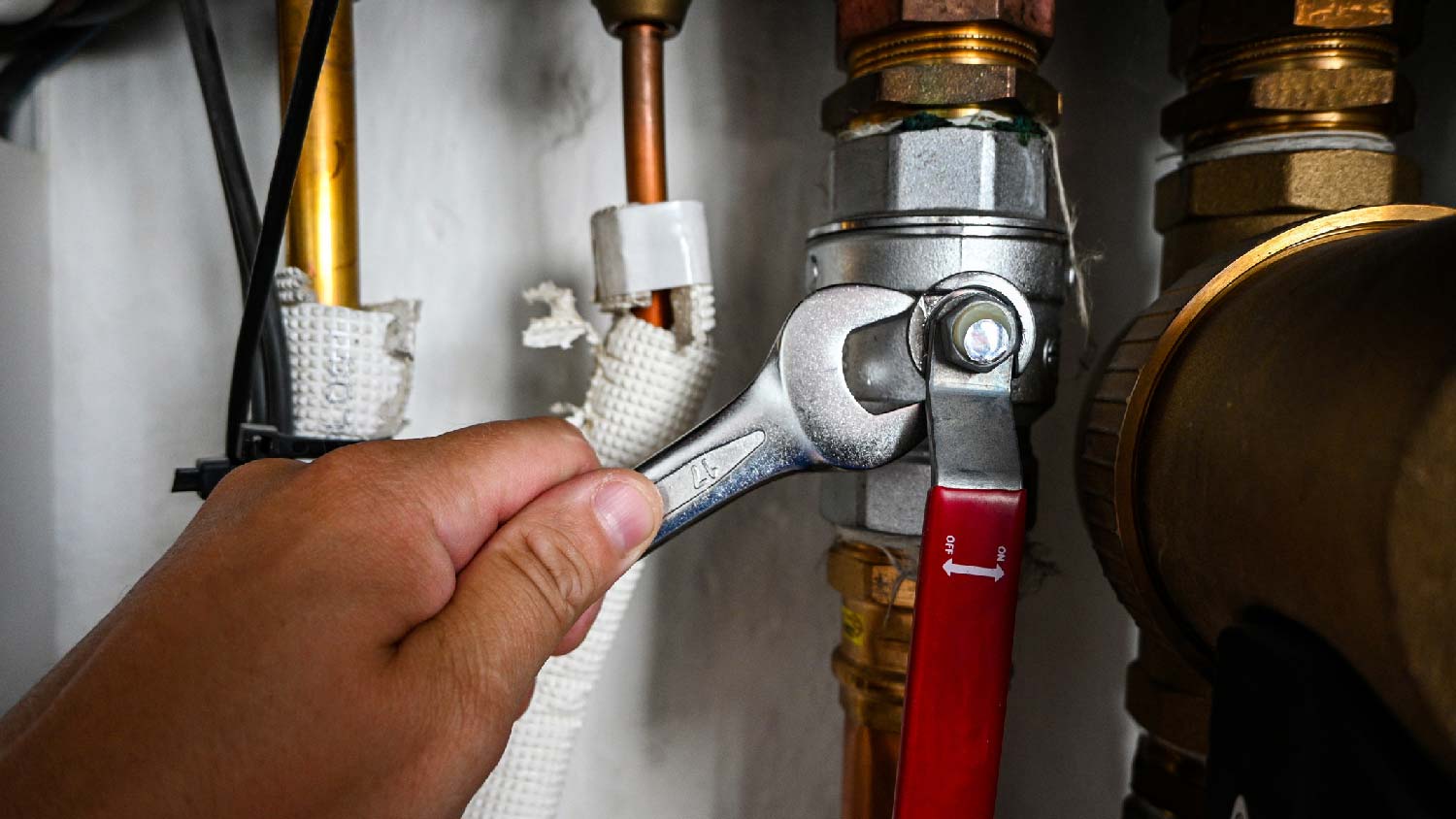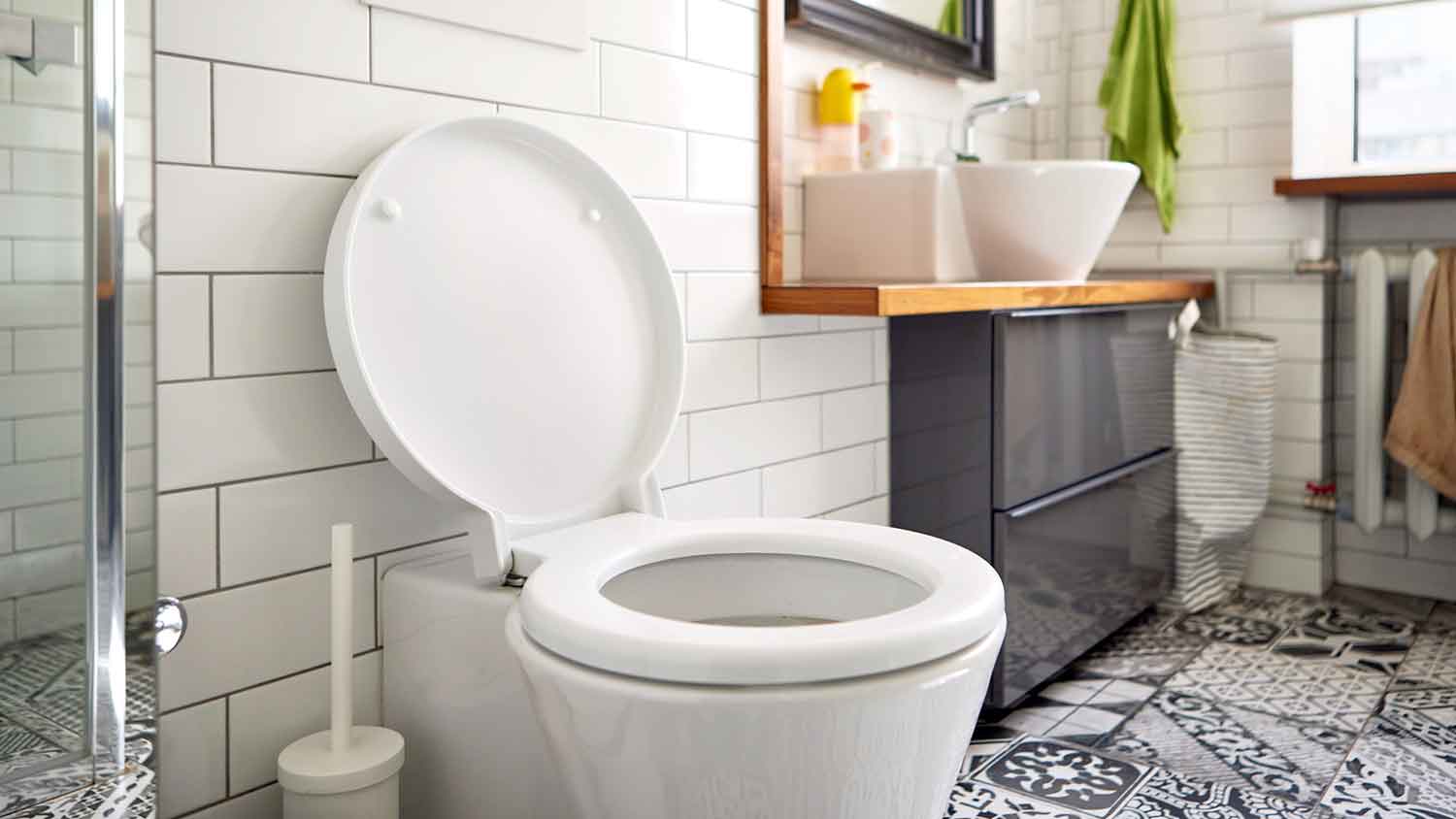Why Does My Bathtub Fill With Water When I Shower? 5 Common Problems and Solutions
These simple fixes can make a big splash


A clogged drain is the most likely thing to cause this issue.
Multiple fixtures draining slowly could be a serious issue.
Snake through the overflow valve, not the drain gate, to DIY a fix.
A bathtub filling with water during a shower can be a nuisance, but it can also indicate a severe issue with your plumbing system. Understanding how to diagnose and fix the issue can get you back to problem-free showers and rule out major plumbing problems. If you find yourself asking, “Why does my bathtub fill with water when I shower?” read on for answers.
1. Clogged Tub Drain
The most common reason a bathtub backs up when you shower is a clogged tub drain. Tub drains clog more often than other drains because hair and soap scum accumulate inside and block the flow of water over time. If your tub used to drain normally but now is the only fixture in your home with a slow drain, this is almost certainly the underlying issue.
The Solution
First, try snaking the drain yourself. Unscrew the overflow valve, which is located under the tub spout on the wall of the tub, and insert the snake into the pipe behind it. Pull it out and remove any hair and soap scum. Repeat the process a few times until the drain is clear. Avoid snaking the drain at the bottom of the tub, as the pipe under it has a sharp turn that may cause the snake to get stuck.
If snaking the drain doesn’t fix the issue, call a plumber to help.
2. Faulty Diverter Valve

Another common issue that causes your tub to fill during a shower is a faulty diverter valve. This valve is responsible for diverting water from your tub spout to your shower head. If all of the water isn’t diverted, it can flow from both fixtures and overwhelm the drain. If you notice water coming out of your tub spout while you’re showering, this could be the issue.
The Solution
You’ll need a new diverter valve installed, so call a local plumbing repair company to replace it for you.
3. Main Sewer Line Clog
A more serious issue that can cause your bathtub to fill during a shower is a clog in your main sewer line. This will cause a backup and slow draining throughout your entire home, so if multiple fixtures are draining slowly, this could be your issue.
The Solution
Call a plumber to have them open up your main line. They may use an auger to clear any clogs or perform a camera inspection to check for blockages.
4. Full Septic System

Similarly, an overflowing septic system could cause water to back up into your home if it has nowhere else to go. This would lead to multiple fixtures draining slowly, so if you notice slow draining in general and you know you’re on septic, this could be your problem.
The Solution
Call a local septic tank pumping company to pump your tank. You should have this service done every three to five years, so consider setting up pumping on a schedule to avoid problems in the future.
5. Malfunctioning Sump Pump
Basement bathrooms rely on sump pumps to move water up to the main line, so if a below-grade shower is filling with water while you bathe but the fixtures upstairs aren’t, this could be your problem.
The Solution
Ensure you didn’t accidentally unplug the sump pump or shut power to it from the breaker. Hire a plumber to assess any other issues with your sump pump.
When to Call a Pro
You can attempt a DIY solution for a slow-draining tub if it’s the only fixture in your home that's giving you an issue. Snaking the drain should fix the problem. If it doesn’t, or if multiple fixtures in your home are draining slowly, call a pro. This could indicate a much more severe problem, like an overflowing septic system or a main sewer line clog.
Frequently Asked Questions
The diverter valve in your bathtub is responsible for diverting water between your tub spout and your shower head. If water comes out of both at the same time, you have a faulty diverter valve. You can have a plumber replace this for you, or you can replace it yourself if you have some experience working with plumbing fixtures.
Start by unscrewing the overflow valve, which is located on the wall of your tub between the floor drain and the tub spout. Gently insert a plumbing snake down into the pipe, move it back and forth, and pull it out. Remove any hair, debris, and soap scum that comes out with it. Repeat the process until the snake comes out clean, and then reinstall the cap on your overflow valve.





- Gas Plumbers
- Plumbing Repairs
- Sump Pump Installation
- Wood & Pellet Stove Repair
- Shower Repair
- Wood Stove Services
- Emergency Plumbers
- Fire Sprinkler Contractors
- Perc Test Companies
- Toilet Repair & Installation
- Boiler Repair
- Sewer Line Repair
- Faucet Repair
- Main Drain Camera Companies
- Foundation Drain Installation
- French Drains
- Bathtub Replacement
- Subcontractors
- Storm Drain Contractors
- Affordable Plumbing
- Plumbing & Heating Companies
- Bathroom Repair Services
- Sink Installation
- Commercial Plumber
- Barndominium Builders
- Water Line Repair
- Faucet Installation
- Water Line Installation
- Leak Detection










